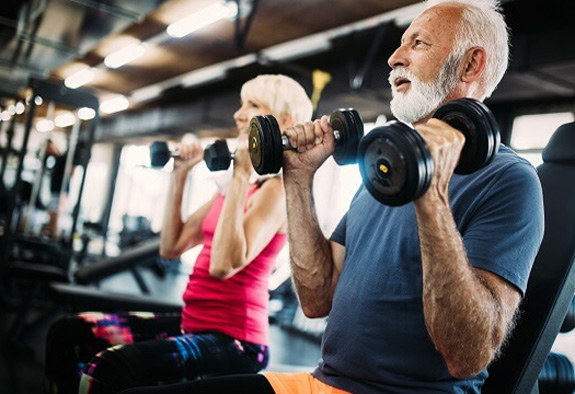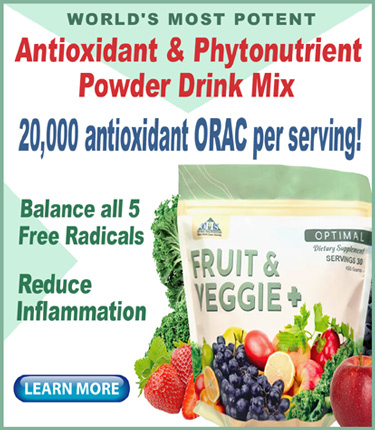When it comes to supplementing the nutrients necessary to build muscle, protein, creatine, glutamine, magnesium and isolated amino acids usually top the list.
Clearly all of these are beneficial, and a century of research has proven it. However, another essential part of muscle building is mostly overlooked: consuming vegetables.
It turns out that whether you’re a gym bro who’s bulking up or an elderly person wanting to reduce the effects of aging, the people getting the best results are the ones who include “Vitamin V”… vegetables!
The benefits
Research has shown that bodybuilders who reported low success in building muscle were able to finally see better gains after they started including vegetables in their regimen—suggesting it was the missing piece of the puzzle.
At the same time, studies focusing on the elderly have found that those with a high vegetable intake were able to better preserve muscle mass over the years.
Here are some of the ways vegetables—and to a lesser degree, fruit—support muscle growth and maintenance:
• Nitrates found in vegetables—especially green leafy vegetables—help with muscle strength and power by improving blood flow and removing cellular waste that causes soreness.
• Vegetables combat the inflammation caused by exercise. Exertion causes free radicals in the body, leading to inflammation. Fruit and vegetables contain the variety of antioxidants needed to kill the free radicals produced by the body—thereby reducing inflammation. This leads to more efficient and speedier muscle recovery.
• Vegetables are nutrient-dense in general, and they contain all the vitamins and minerals essential for building new muscle. Many of these micronutrients aren’t present in high-protein foods and protein powders.
Greens for Growth!
. . . . . . . . . . . . . . . . . . . . . . . .
Research shows that only 90 milligrams of high-nitrate vegetables are needed each day to increase muscle mass and walking speed.
For comparison, most leafy greens provide 75 milligrams of nitrates in a single one-cup serving!
Examples of high-nitrate foods include well-known leafy greens such as lettuce, spinach, arugula and kale.
• Fiber in vegetables help athletes perform better by optimizing gut health. The fiber serves as a prebiotic which contributes to a healthy gut microbiome. Studies show the benefits of a healthy microbiome—faster recovery and less illness—helps athletes perform better.
• Certain cruciferous vegetables, such as broccoli, cauliflower and cabbage, provide an anti-estrogen effect. This happens due to certain properties in the phytochemicals they contain. This effect is beneficial to muscle building because lower estrogen levels may help fight body fat, minimize water retention and enhance testosterone levels.
12-year study
An Australian study published in The Journal of Nutrition in March, 2021 highlighted the muscle benefits of veggies.
Researchers at Edith Cowan University gathered dietary information from 3,759 people periodically over 12 years. The average age of participants was 48, and the detailed tracking included documenting the types and amounts of food they ate daily.
At the end of 12 years, the participants’ leg strength and walking speed were measured. Leg strength was evaluated by a knee extension test. Walking speed was determined by how fast people could rise from a chair, walk eight feet, and return to the seated position.
The researchers found that people who followed a high-nitrate diet from green leafy vegetableshad greater leg muscle strength and faster walking speeds than those who ate half that amount or less.
3-year study
Another study, conducted at the Human Nutrition Research Center on Aging at Tufts University, documented how vegetables are beneficial in offsetting acidosis—a high acid state that makes the body susceptible to disease.
According to the researchers, acidosis is common in high-protein diets and triggers a muscle-wasting response.
To see if a vegetable increase could reverse the condition, the researchers conducted a cross-sectional analysis on 400 volunteers who had completed a 36 month high-vegetable osteoporosis intervention trial.
The study concluded that volunteers who followed a diet with substantial high-potassium vegetables could expect to have 3.6 more pounds of lean tissue mass than volunteers who only had half the intake, or less.
Ironically, this amount of improvement is almost equal to the amount of muscle mass lost by the average person as they age.
This is promising news since it suggests that age-related muscle decline can be virtually eliminated when a variety of vegetables are included in the diet!
The study was published in the American Journal of Clinical Nutrition and the USDA.gov website.
– – –
Sources: The Journal of Nutrition, USDA.gov, JustAPedia.org.


